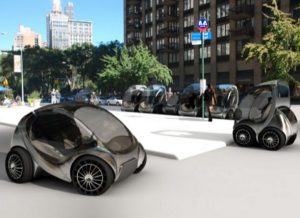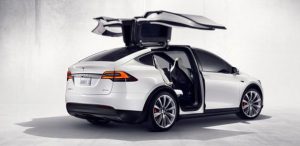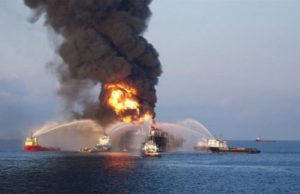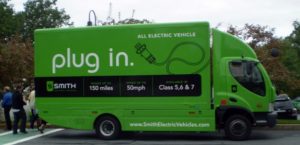 Fleets, freight and logistics companies, and urban transportation planners are looking at best practices for hitting targets in greenhouse gas emissions, air pollution, fuel consumption, and mobility in crowded cities. That will be a discussion topic this week at ACT Expo in Long Beach during corporate sustainability speaker panels.
Fleets, freight and logistics companies, and urban transportation planners are looking at best practices for hitting targets in greenhouse gas emissions, air pollution, fuel consumption, and mobility in crowded cities. That will be a discussion topic this week at ACT Expo in Long Beach during corporate sustainability speaker panels.
Erik Neandross, chief executive of Gladstein, Neandross & Associates, a clean transportation and energy consulting firm and organizer of ACT Expo, says that a hot topic at the conference will be California’s Sustainable Freight Action Plan. The plan will likely shake up the freight industry, he wrote in Trucks.com, “as it aims to transform the state’s freight system by 2050, making it more efficient, connected and advanced, while transitioning to zero-emission technologies.”
The plan will include an implementation strategy for deploying over 100,000 freight vehicles capable of zero-emission or near-zero-emission operation by 2030 aimed at meeting the state’s air quality and climate protection goals. It comes from a collaboration with the California Department of Transportation, the California Air Resources Board, the California Energy Commission, and the Governor’s Office of Business and Economic Development.
The draft Sustainable Freight Action Plan was scheduled to be released to the public on Friday, April 29. The anticipated plan is sure to be a key discussion topic at ACT Expo, Neadross said.
Fleets and freight transport companies can reduce road transport carbon emissions 29% in 2030 by deploying a clean transportation strategy, according a Lux Research Study. The sharp cut – exceeding the target of 24% set by 188 nations at the Paris Conference of the Parties (COP21) in 2015 – will be realized from a combination of low-carbon fuels, alternative fuel vehicles, and improved fuel efficiencies; biofuels and natural gas vehicles together will account for 45% of potential fossil fuel displacement as nations look for new technologies to cut emissions, Lux Research says.
Biofuels recommended for use to hit these targets include cellulosic ethanol, renewable diesel and biomethane (renewable natural gas). These fuels, “have lower well-to-wheel carbon intensities compared to their first-generation counterparts and play a pivotal role in cutting emissions, as does renewable electricity,” said Yuan-Sheng Yu, Lux Research Analyst and lead author of the report.
Without improved fuel efficiencies, emissions reduction falls short of the COP21 target in 2030 by nearly 5%. Automakers will have a range of lightweight materials available as multinationals and start-ups develop the next-generations of steel, aluminum, and composite technologies, Lux Research says.
Corporate sustainability policies have pushed fleets and logistics operations in this direction. Walmart has set a goal to double its fleet efficiency compared to 2005, and is 87% of the way to meeting this target. General Mills has cut its fuel consumption 22% compared to 2005 levels. DHL has improved the carbon efficiency of its business activities by 25% compared to 2007. The company recently added nearly 1,000 electric vehicles to its fleet, bringing that total to more than 13,500 in use network wide.
UPS is growing its alternative-fuel vehicle fleet every year and improving efficiency with its proprietary routing software ORION (On-Road Integrated Optimization and Navigation). The company’s “green fleet” is comprised of about 6,840 vehicles, or about 7 percent of its total feet, and includes propane, compressed natural gas, liquefied natural gas, and hybrid and electric vehicles.
Employers are working with city planners and transportation agencies to help deal with traffic congestion, air pollution, and to reduce stress for the local workforce. Susan Shaheen, a researcher at the Transportation Sustainability Research Center of the University of California, Berkeley, says ridesharing carpool services are a solution being explored that could help fix some of the “first-mile, last-mile” issues with U.S. transportation grids.
In Late March 2016, Lyft launched Lyft Carpool, a pilot program in the San Francisco metro area. The focus has been to address a heavily congested section of Highway 101 between San Francisco and Silicon Valley. The program matches up commuters for carpool rides. Commuters would pay through mobile apps and the services would take a percentage of the money charged.
Lyft also is working with the regional Metropolitan Transportation Commission to expand carpool lanes along that route, said Emily Castor, director of transportation policy for Lyft. The company also is working with transportation agencies in Nashville, Los Angeles, Dallas, Denver, and other cities to provide more connections from homes to mass transit.
This test program and other carpooling and ridesharing services are gaining traction and interest with public transportation planners. A recent study by the American Public Transportation Association suggests that ridesharing trips using Uber and Lyft are replacing trips made with personal vehicles more than trips using public transport. The report recommended that public-transit officials start working on ways to make ridesharing part of their services.

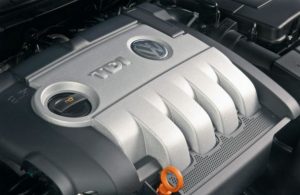 VW deadline extended and company recalling e-Golfs: Volkswagen had its March 24 deadline extended to April 21 to submit its fix for about 580,000 diesel vehicles in its emissions scandal.
VW deadline extended and company recalling e-Golfs: Volkswagen had its March 24 deadline extended to April 21 to submit its fix for about 580,000 diesel vehicles in its emissions scandal. 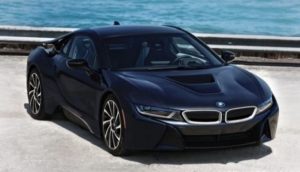 BMW’s next phase: BMW is making a move to reaffirm its top spot as the largest global luxury carmaker with announcements on the iNEXT autonomous electric vehicle, additions to the i3 and i8 models, and more versions of the high-end 7-series sedan and X7 SUV. During BMW’s annual financial press conference, CEO Harald Krueger said the iNEXT will arrive in the next 10 years and will use new sensor technology and powerful software for automated driving. Krueger said it “will set a new benchmark in this area.” The company will soon launch
BMW’s next phase: BMW is making a move to reaffirm its top spot as the largest global luxury carmaker with announcements on the iNEXT autonomous electric vehicle, additions to the i3 and i8 models, and more versions of the high-end 7-series sedan and X7 SUV. During BMW’s annual financial press conference, CEO Harald Krueger said the iNEXT will arrive in the next 10 years and will use new sensor technology and powerful software for automated driving. Krueger said it “will set a new benchmark in this area.” The company will soon launch 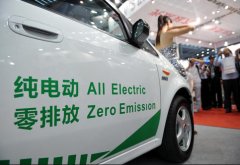 Major feature on China and EVs: Automotive News has researched the
Major feature on China and EVs: Automotive News has researched the 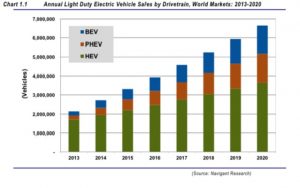 Automakers have understood for years that California, and the overall U.S. market, can’t be depended upon for meeting large-scale sales targets in plug-in electric vehicles. The decline in U.S. sales numbers during 2015 didn’t help, but the overall sales volume had still been small enough for automakers to question their future plans. That’s where global markets have become more important as OEMs look to sell enough volume to justify the resources invested in electric cars through talented employees, R&D, safety and performance testing, marketing spend, and setting up assembly plants to reach economies of scale. That has been the case for Tesla Motors along with its major OEM competitors, which makes China and other overseas markets even more important.
Automakers have understood for years that California, and the overall U.S. market, can’t be depended upon for meeting large-scale sales targets in plug-in electric vehicles. The decline in U.S. sales numbers during 2015 didn’t help, but the overall sales volume had still been small enough for automakers to question their future plans. That’s where global markets have become more important as OEMs look to sell enough volume to justify the resources invested in electric cars through talented employees, R&D, safety and performance testing, marketing spend, and setting up assembly plants to reach economies of scale. That has been the case for Tesla Motors along with its major OEM competitors, which makes China and other overseas markets even more important.